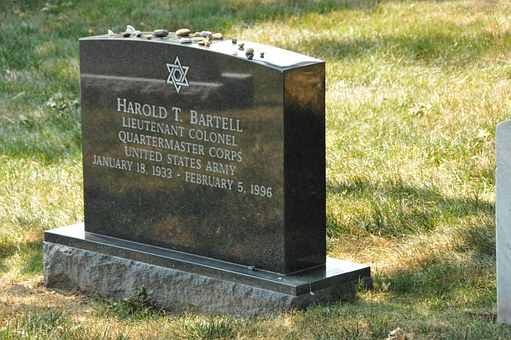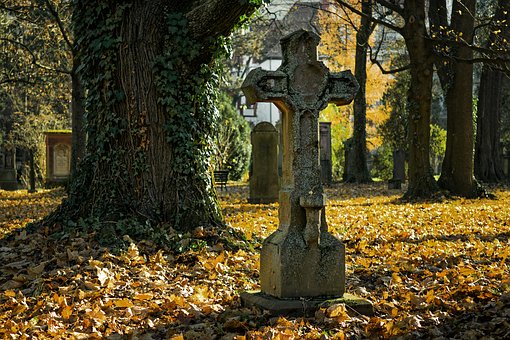Archived Blogs
|
Aside from life saving transfusions, I had no idea how powerful blood can be. Not just any blood...menstrual blood. (Warning: this blog has some taboo words in it and is about a subject a lot of people don’t like to talk about)
Let’s just look at some interesting facts about a woman’s cycle as we go through the ages. The ancient Greeks believed that problems with menstruation could cause blood to accumulate around the heart and the uterus to wander around the body. The term hysteria came from the Greek word for ‘uterus’. The Bible says: “‘When a woman has her regular flow of blood, the impurity of her monthly period will last seven days, and anyone who touches her will be unclean till evening.” (Leviticus 15.19) Along those lines, the church used to refuse communion to menstruating women. We had some kooky notions in the past, but listen to this story. Béla Schick was an American pediatrician who became famous for discovering a test for susceptibility to diphtheria. He headed several pediatric departments in New York City and was a professor at Columbia. According to various stories on the internet (you trust those don’t you?) Dr Schick asked his receptionist/nurse or housekeeper to arrange a bouquet that he’d received from a patient in a vase of water. She refused. In some stories she eventually gives in and does as he requests. By morning the flowers are dead. She explained that when she is menstruating, flowers wilt when she touches them. This was not only interesting…it was almost Biblical. A theory was published stating that women secrete a toxin, the ‘menotoxin’, when they menstruate. Alarmingly, this toxin could prevent dough from rising and beer from fermenting. He did some studies with the help of his housekeepers, but more scientists took up the cause. A article titled, A PHYTO-PHARMACOLOGICAL STUDY OF MENSTRUAL TOXIN by Macht and Lubin was published in the Journal of Pharmacology and Experimental Therapeutics in 1923. The Abstract said: 1. The blood serum, blood corpuscles, saliva, sweat, milk and other secretions of menstruating women contain a toxic substance characterized by specific pharmacological and chemical reactions. 2. This menstrual toxin or menotoxin is very much more powerful in its effects on plant protoplasm than on animal tissues, so that its nature and properties can be best studied by phyto-pharmacological methods. Here’s my favorite part: The experimental data obtained by the authors in the study of menotoxin confirm in a striking degree the empirical observations concerning a menstrual poison prevalent in folklore and handed down in classical literature. Another study in 1944 published in JAMA ( a big name in medical journals) showed that menstrual blood was toxic to rats and caused death in 48 hours. One article implied that the menotoxin might be similar to that produced by poisonous toads. (Experimental studies, old and new, on menstrual toxin 1934) It wasn’t until 1953 that Dr Bernard Zondek announced that menstrual blood had no more toxicity than any other tissue and that it was bacterial infections, not toxins, that caused rats to die in prior studies. Thank goodness that nonsense is cleared up…or is it? Vegan health bloggers are claiming that menstruation is the body’s attempt to get rid of toxins and that a heavy period is the result of a toxic diet. The reverse, an absent period-- which can be achieved by dramatic calorie deprivation, indicates a clean diet. Good grief. Here we go again. As Dr Jen Gunter says, “Menstrual blood is the lining of the uterus (endometrium) that leaves the body when an embryo fails to implant.” and “If menstrual blood were toxic that means human embryos are deposited in a toxic wasteland.” There is no menotoxin. That’s it. Period.
0 Comments
We were enjoying a family game night when my sister brought the subject up. “Let’s get together and paint rocks,” she said. “Why in the world would we want to do that?” I asked, taking furtive glances at her alcoholic beverage. “It inspires people,” she explained. “Hmm,” I answered. “I think it’s your turn now.” There are stories behind some stones. For instance, have you heard about the Jewish tradition of laying a pebble or stone on a gravestone? According to some sources, it started when stones were used to cover up the departed. They were supposed to keep predators from getting to the body, but they also served to keep evil spirits from escaping. Rabbi Andrew Straus, in a blog titled Rocks, Rocks and more Rocks, relates that it is a sign of respect to participate in the burial of a loved one. The Mitzvah of mitzevah (setting a stone) is when a mourner symbolically takes part in the ceremony by adding a pebble or stone to the grave. In addition to showing respect, it’s a sign to others that the departed has been remembered, that they’ve made an impression on those left behind. Next time you visit a cemetery, look around…I bet you find a few pebbles lining one of the markers. You’ve probably seen stacked stones on beaches. Recently, it’s become popular to layer stones, or balance stones, into unusual formations. How did this come about? Stacked stones were originally used as trail makers. It’s obvious from the appearance of the stack that the tower is man-made and not natural, so it was a hiker’s way of reassuring another that they were on the right trail. Now, it’s popularity has increased and there are beaches that are covered with countless stone structures. What’s the harm of a little tower that can symbolize thankfulness, grace, a wish or even a tribute? It turns out…it can be quite a problem. It’s disturbing the natural order, scaring away insects, crabs and small animals that seek shelter in between rocks. Starre Vartan says “It’s not harmless when everyone does it.”
Painting rocks is a new trend. The goal is to write something cheerful or inspirational on the rock for someone to find. It sounded silly...until it happened to me. I was running along a path and came upon a painted rock. I stopped in my tracks. I’d been trying to sort out some problems in my head. I was sweaty, hot and tired. And that’s when I saw it. It didn’t solve any of my problems…but it did make me smile. So, mission accomplished for the rock painter! I thought about buying some paint and doing my best to make someone else smile, but I remembered those stacked stones. One local rock painter is enough. According to New York Times Columnist David Brooks there are “resume virtues” and “eulogy virtues”. He wrote a book called The Road to Character and he described the two. Basically “resume virtues” are those we associate with a career. He was named Chairman of the Board and he increased sales by 50%. “Eulogy virtues” are what would be said at your funeral. He was a kind and he loved dogs. Let me introduce you to someone… I’ll get back to the virtues later. Andrzej Tadeusz Banawentura Kościuszko (also known as Andrew Thaddeus) was born in 1746 in Lithuania. I saw his name on a statue near the White House in Washington D.C. He graduated as a captain of the Corp of Cadets and went to Paris to continue his military education. Once there, he discovered that it was forbidden for foreigners to be accepted into the military academy. So he settled for studying art instead. Or did he? There’s no doubt that he was interested in painting and drawing, but he actually spent the next five years auditing military lectures and taking advantage of the resources in the military academy library. When he returned home, he discovered that his brother had burned through the family’s finances and he was forced to get a job as a tutor. He fell in love with his pupil, Ludwika, but was discouraged from continuing the relationship with her. Her father told him “Turtle doves are not for sparrows…” and then he had his hired thugs thrash Kościuszko. Kościuszko had heard about the American Revolution and he decided to go to North America. He was so impressed with the Declaration of Independence that he set out to meet one of the authors, Thomas Jefferson. They corresponded with each other for the next twenty years. Of Kościuszko, Jefferson said “He is as pure a son of liberty as I have ever known.” There was a flurry of military activity after that. (You can read the details on Wikipedia here) He signed up for the Continental army to help defend against the British. I always imagine military leaders with raised swords charging into the fray, but he wasn’t that kind of guy. Kościuszko was a strategist. There are multiple accounts of how he surveyed fortresses and found weak spots, how he destroyed bridges and dammed streams to allow exhausted soldiers to escape, how he developed intelligence contacts to spy on the British. His fortifications to West Point were considered innovative for his time. For his service and contributions, he was promoted to Brigadier General. When he returned to Europe he went into debt after freeing most of his indentured servants (did I mention that the United States hadn’t paid him for seven years?). He argued that peasants and Jews be allowed to become Polish citizens and he took part in an uprising against Russian rule in Poland. For his service, he was promoted to Lieutenant General and considered one of Poland’s most brilliant commanders. At age 71, Thaddeus Kosciuszko died after falling off a horse. His will designated his estate should go toward the education and freedom of African American slaves…including Jefferson’s. Despite making it to the Supreme Court three times, none of his money was ever used for that purpose. According to New York Times Columnist David Brooks there are “resume virtues” and “eulogy virtues”. One could describe Kosciuszko as a Brigadier General or Lieutenant General, but that’s not what I saw on the stature in Washington. It was more in the line of a “eulogy virtue” and it gave me the chills… What are we going to be remembered for when we die?
The titles that we’ve earned on a stepwise progression in our workplace? Or should our ambitions rise higher than that? In 2017, there was an interesting story published about the “windshield phenomenon”. Motorist were noting that, despite long summertime traveling vacations, they weren’t having to stop to clean their windshields as often. When I thought about it, I remembered having to clean not only my windshield, but the grill of my car and my headlights too. Yuck.
I could call this phenomenon the Canary in the coal mine but I’ll save that idiom for later. The declining bug population has been recognized and studied for some time. In 2004, a ‘splatometer’ was applied to the front of cars to measure the bug population. One splat was recorded for roughly every 5 miles. This study has not been replicated so I’m afraid I can’t tell you the current splat ratio. Any splat testers out there? Why in the world would you care about the decline in the bug population? Less mosquitoes? That’s ok with me. Less flies? Won’t miss them either. Less bees? Wait a minute. I like bees. And you should too. Insects are facing the most massive extinction of species since the dinosaurs...and it could have an impact on our food chain. Bees are the pollinators for 75% of our crops and much of the food we eat depends on bees. So what’s happening to the bees? (I should point out that I’m talking about bumble bees, not honey bees. If you’re interested, you can see the difference here.) The short answer is : Us Let me explain. Diseases and parasites are killing the bees. A parasitic mite, the Varroa destructor, is hurting the bee population in the US. While it sounds like the name of a video game villain, you can see the real parasite here. The Nosema Ceranae , this one a fungus, is hurting the European population. Infections aren’t our fault, right? Actually, experts believe that toxic chemicals are affecting the bee’s ability to resist these diseases and parasites. Toxic chemicals like insecticides. Even at sublethal doses, like those found when the plant absorbs the chemicals, insecticides affect the navigation system and learning behaviors of insects that feed on the plants. Did you know that pollen, the main form of protein for a bee, has an average of 7 pesticides in it? Lastly, climate change is causing increased temperature extremes and changing rainfall patterns and that’s having effects on every species of insects and animals. That’s our fault too. Back to that Canary in the coal mine reference. We’re not the only species at risk. Hans de Kroon, a German scientist, noted that a specific bird population is at risk due to the declining insect population. But how did they prove it? They compared museum specimens of Whip-poor-wills from many years ago to birds living now and discovered a difference in the chemical make up of their claws and feathers. Based on their research, living birds are not eating the same bug content and it’s having an impact. The Whip-poor-wills won’t be the only bird affected. The same problem is likely to affect other insect eaters like nighthawks, swifts and swallows. Beautiful, graceful birds. What can anyone do? If you live in a home, add plants to your landscape that are friendly to bees. Plants like: Lavender, sunflower Heather, Sage, Asters, Rosemary, Oregano and mint. You might want to also add plants that repel mosquitoes. Plants like: Lavender, basil, lemon balm, marigolds and lemon grass (Did you know that the oils from the the lemon grass plant are used to make citronella?) Stop using insecticides and buy more organic foods. If the idea of saving bees doesn’t motivate you… What about fireflies? After all, they’re half-magic and we all need a bit of enchantment in our lives. |
Archives
October 2020
Categories |
COPYRIGHT 2017 SUSAN BADARACCO | Site Credits










 RSS Feed
RSS Feed